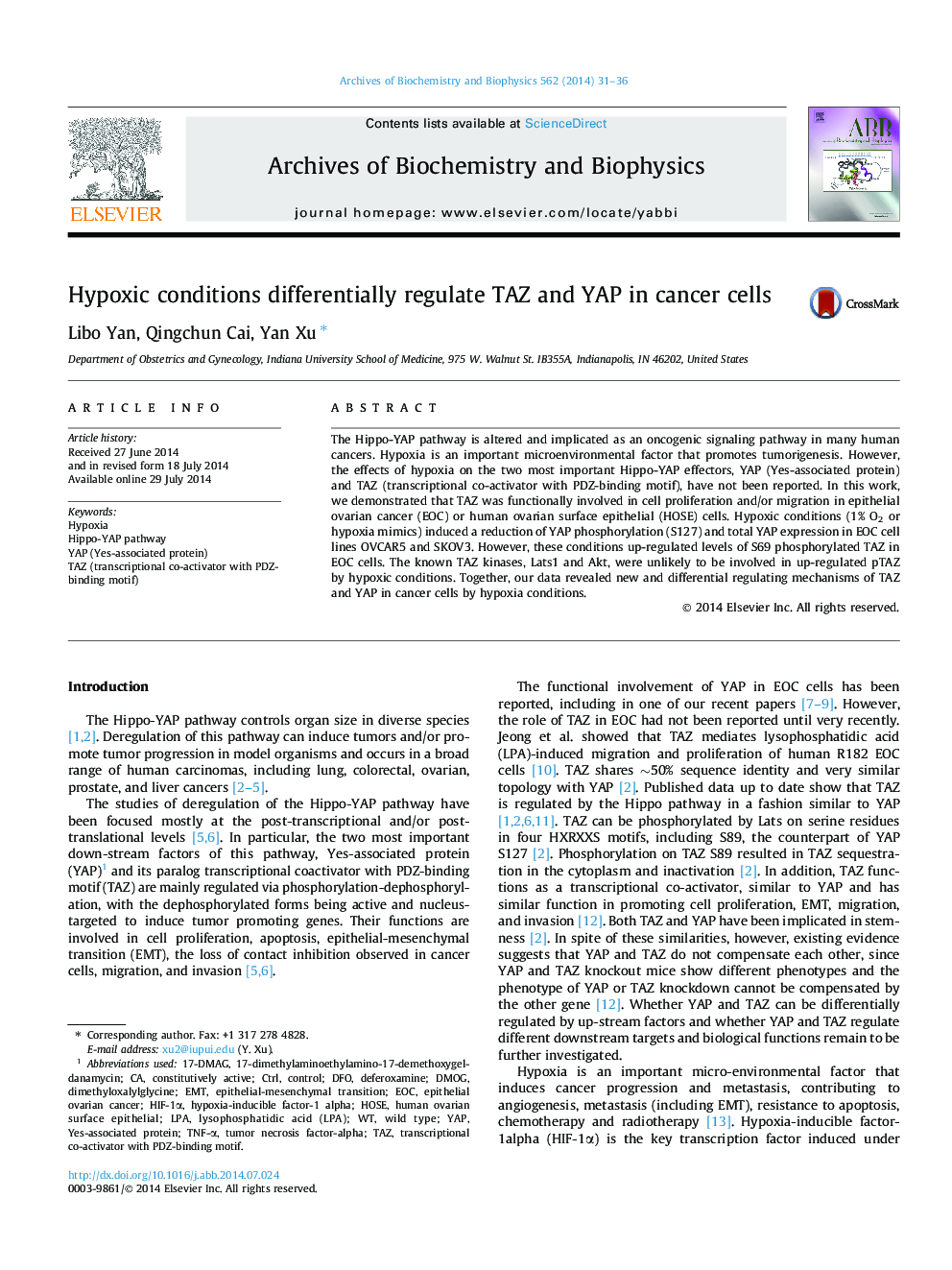| Article ID | Journal | Published Year | Pages | File Type |
|---|---|---|---|---|
| 1925020 | Archives of Biochemistry and Biophysics | 2014 | 6 Pages |
•YAP and TAZ was regulated by hypoxic conditions in cancer cells.•TAZ was functionally involved in ovarian cancer cells.•Hypoxic conditions had opposing roles in the level of p-YAP and p-TAZ.•HIF1-α was differentially involved in DMOG-induced TAZ and YAP regulation.
The Hippo-YAP pathway is altered and implicated as an oncogenic signaling pathway in many human cancers. Hypoxia is an important microenvironmental factor that promotes tumorigenesis. However, the effects of hypoxia on the two most important Hippo-YAP effectors, YAP (Yes-associated protein) and TAZ (transcriptional co-activator with PDZ-binding motif), have not been reported. In this work, we demonstrated that TAZ was functionally involved in cell proliferation and/or migration in epithelial ovarian cancer (EOC) or human ovarian surface epithelial (HOSE) cells. Hypoxic conditions (1% O2 or hypoxia mimics) induced a reduction of YAP phosphorylation (S127) and total YAP expression in EOC cell lines OVCAR5 and SKOV3. However, these conditions up-regulated levels of S69 phosphorylated TAZ in EOC cells. The known TAZ kinases, Lats1 and Akt, were unlikely to be involved in up-regulated pTAZ by hypoxic conditions. Together, our data revealed new and differential regulating mechanisms of TAZ and YAP in cancer cells by hypoxia conditions.
